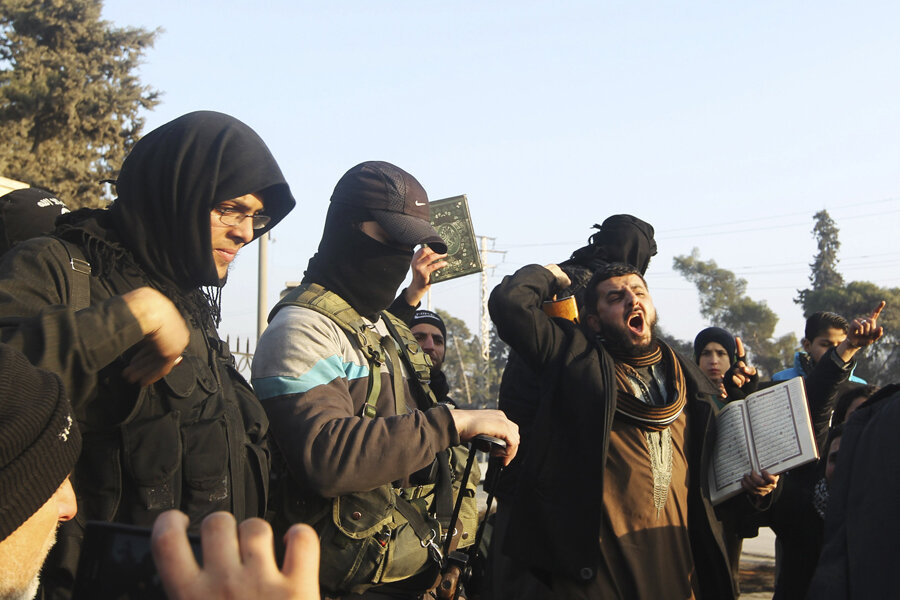Australians aghast at boy's grisly photo from Syria. Are jihadis coming home?
Loading...
A primary school age boy holds up a severed head using both hands. The caption – tweeted by his father – reads, “Thats my boy!”
The photograph, published in The Australian and other media over the weekend, shows the young son of Khaled Sharrouf. Mr. Sharrouf fled Australia last year to fight in Syria and brought his sons with him. The photograph is believed to have been taken in late July in Raqqa, a stronghold of the self-declared Islamist State (IS).
But the photo, and the uproar it has raised in Australia, highlights a growing concern among Western nations: that their citizens, particularly youth, are becoming radicalized in the violent crises of the Middle East.
The young boy in the photograph was raised in the suburbs of Sydney. Other photographs posted on Sharrouf’s Twitter account show him posing with his young sons and the IS flag; father and sons are all holding guns.
Sharrouf, an Australian citizen, is a convicted terrorist and is wanted in Australia for crimes committed in Iraq and Syria, including the alleged execution of an Iraqi official. He used his brother’s passport to leave Australia last year after his own was confiscated.
Mostafa Sharrouf, the brother, told The Sydney Morning Herald that people should forget about the photograph, “He’s gone, forget about it. He’s forgotten about youse [sic]. I’m sure you’ve seen much worse than that.”
Sharrouf was convicted in 2009 of possessing materials that could be used to build bombs and spent four years in prison. The court found that he had had a troubled childhood and suffered from hallucinations.
As the Monitor’s Sara Miller Llana recently reported, increasing numbers of volunteers from Western countries are going to fight with extremist rebels in Iraq and Syria. Many are drawn to the conflicts by social media and online recruiting.
Up to 500 youths from Britain have joined Syrian rebel groups, more than 300 from Germany, and at least 100 from the Netherlands. Many Belgian teens have fled, too, as well as dozens from the United States. An American from Florida was linked to a suicide bombing in Syria in May.
…
Yet in the Digital Age, more than just curious young Muslim women can be recruited. Jihadis can now reach people from every demographic and social strata – from marginalized second- and third-generation immigrants to middle-class Europeans.
The Monitor followed the story of young Parisian woman, Salma, who faced mental handicaps in her youth that her family believes were exploited by recruiters to convince her to go to Syria.
Security cameras showed her walking out the back of the school five minutes after she arrived. She went to the airport, bought a ticket to Turkey, and then, with the help of an online jihadi recruitment network, crossed into Syria to join the civil war. It was a Frenchman on the Internet, already in Syria, who her brother says lured her abroad with heart-wrenching photos of children in the conflict.
...
It didn’t take long for them to discover where Salma had gone. They checked her phone logs and found a number in Turkey. They called immediately. A man picked up and shocked the family by saying she was en route to Istanbul and would soon be transported to Syria.
In the first weeks they texted with her daily. Now correspondence has dropped off to once or twice a week. Salma assures them she is fine. The Frenchman who lured her there asked her father’s permission to marry her. He refused.
Since then, they have found out she did marry the man. The family is crushed. They fear the jihadis just want her to bear a child for the next war. They feel their little “chérie,” who has overcome so much in life, may be lost.
For the rest of the Monitor’s cover story on the changing face of Europe’s new jihadis, click here.








